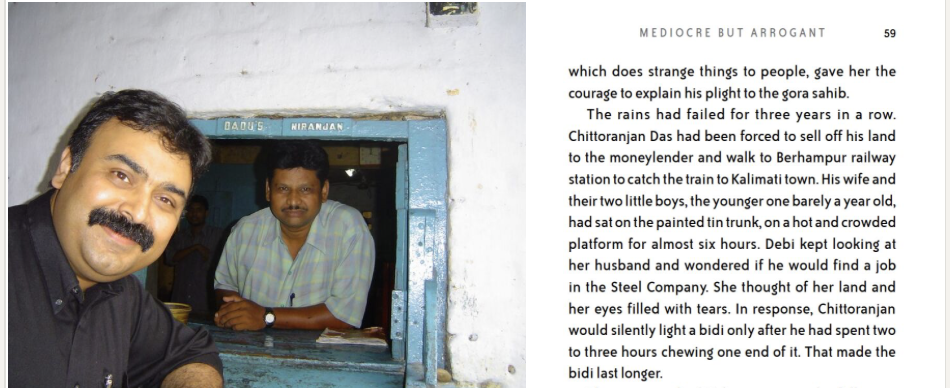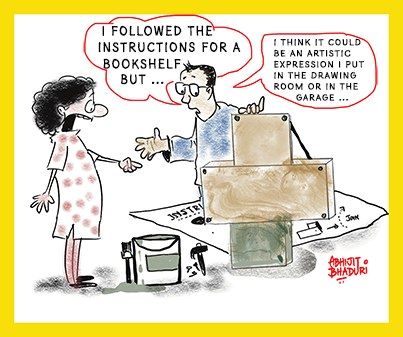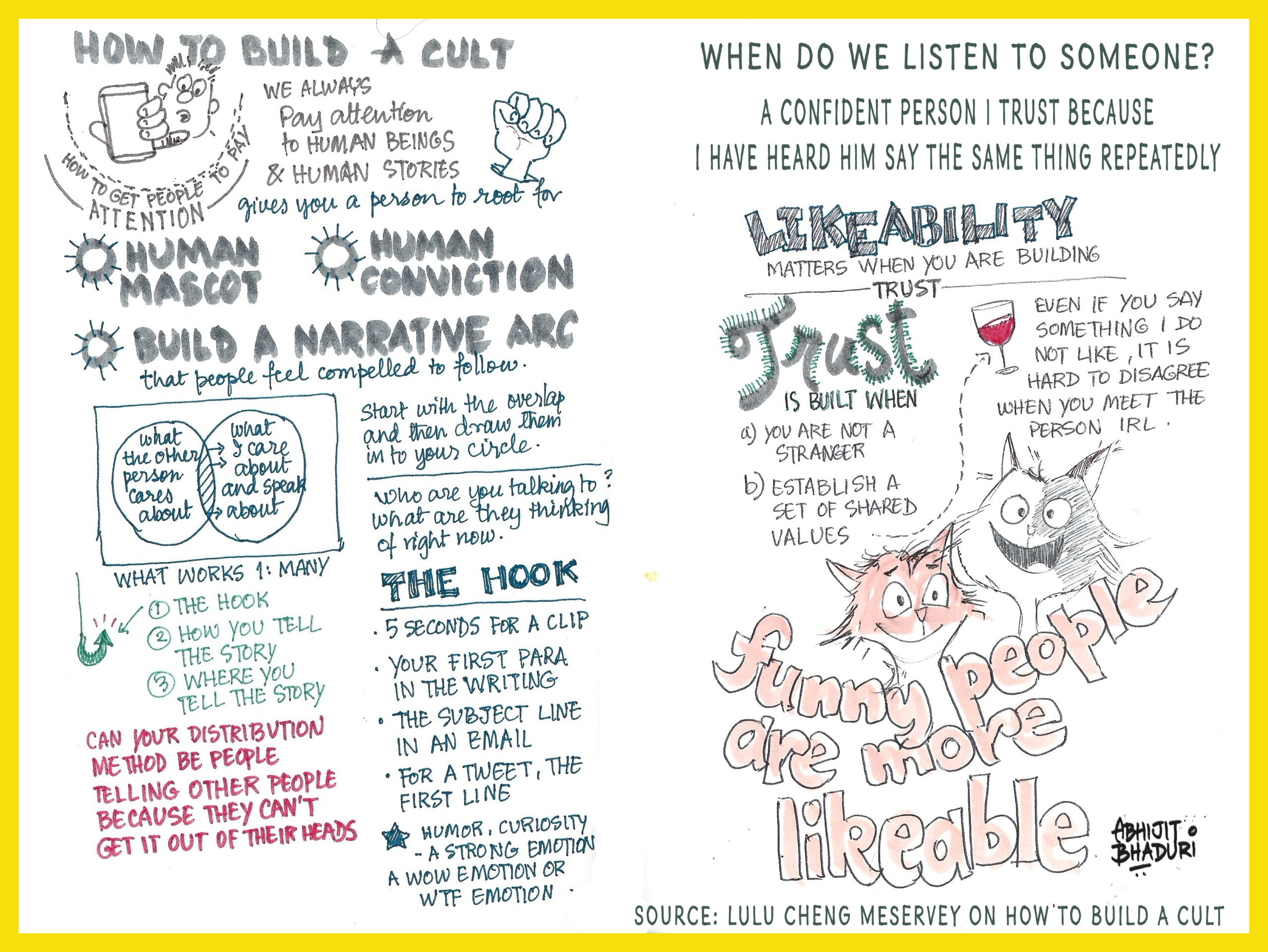The memory is NOT supposed to be a giant storage unit of videos from each hour of your life. If you want to preserve a memory, pause to enjoy the smell, the sight, the sound, the sensations and emotions you are experiencing at that moment. That will help you remember the special moment.
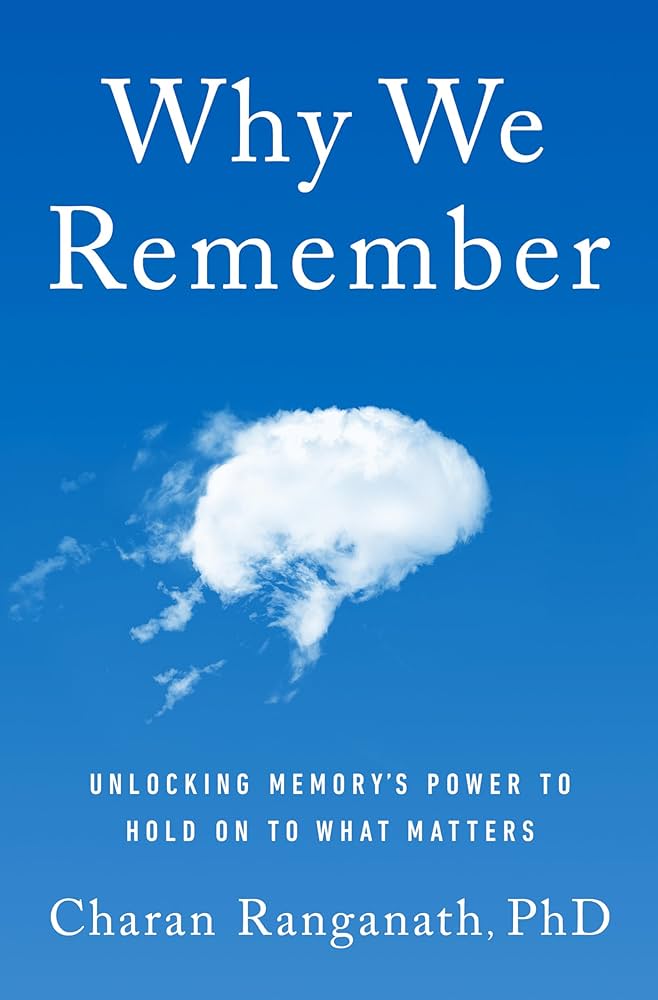
I have often marvelled at people who can effortlessly remember the incidents from their childhood. What they wore on the first day at work – actually I do too. Yet we forget where we kept the keys and that email that I was to respond to this weekend… Why do we forget
Most of us imagine memory as a mental photo album — snapshots waiting to be pulled out and admired. But Charan Ranganath, in his brilliant book Why We Remember, says this is all wrong.
Memory isn’t a photograph. It’s a painting.
And like a painting, it mixes accuracy with interpretation. Some strokes are precise, others are blurred, and some are added later for effect. What we carry in our minds is part truth, part story, part imagination.
Two kinds of memory: facts and experiences
Think of memory as a library with two wings:
- Semantic memory is the facts section. Paris is the capital of France. Water boils at 100°C. You know these things, but you don’t remember the exact moment you learned them.
- Episodic memory is the story section. It’s remembering standing under the Eiffel Tower with roasted chestnuts in your hand. It’s the sound of laughter at a friend’s wedding. Episodic memory lets you relive experiences.
Both are crucial. Semantic gives us knowledge; episodic gives us identity. One tells us what the world is, the other tells us who we are in it.
Memory as time travel
Tulving, the psychologist who coined “episodic memory,” called it mental time travel. Close your eyes and recall your first school day. Notice how your brain doesn’t just “retrieve data.” It puts you back in that chair, with chalk dust in the air and nerves in your stomach. That same system lets you imagine tomorrow’s job interview or your next vacation.
Remembering and imagining are twins. To plan the future, the brain rummages through the past, cuts and pastes fragments, and paints a new scene. This is why people with amnesia can’t picture tomorrow: without a past to remix, they can’t construct a future.
Memory as emotion
Of course, not all memories stick equally. The ones laced with strong emotion — joy, fear, shame, wonder — last longest. You may not remember what you had for lunch last Wednesday, but you’ll never forget where you were when you got bad news, or when someone said “I love you” for the first time.
Emotion is like varnish on the painting: it makes the colors endure.
Memory as social art
Finally, memory is not a solo artist’s work. It’s a mural we paint together. Families retell the same stories until they become the “official version.” Teams and nations do the same. Shared memories, accurate or not, become culture.
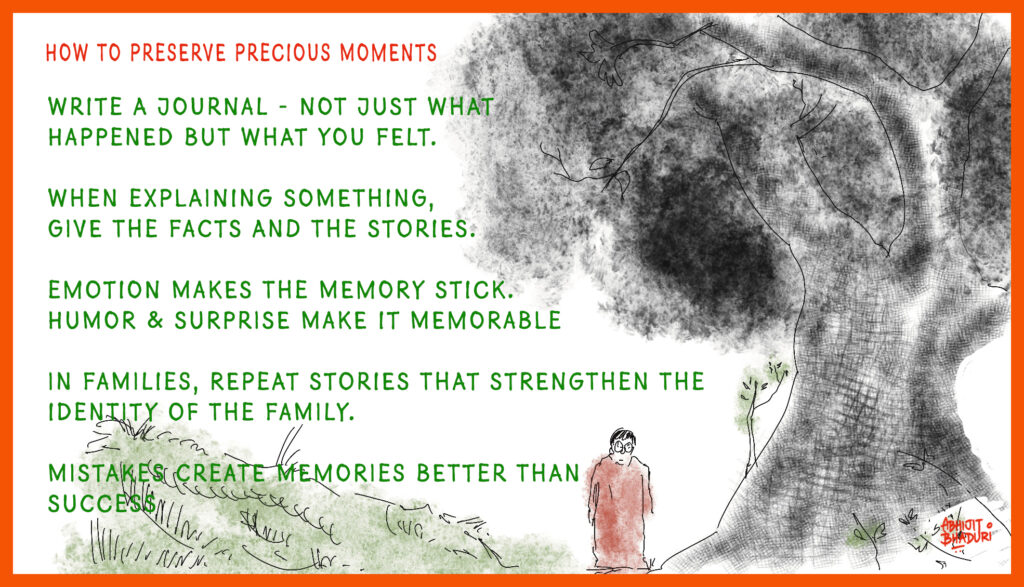
Memory is less about preserving the past than preparing us for the future. It’s our time machine, our paintbrush, and our mirror. And every day, with every story we tell, we’re repainting who we are becoming.
The book starts with the question: Why we remember. We remember because it is the most powerful way in which our identity is shaped. The stories you have heard, the wonder that you experienced as you watch a ray of sunlight on a dew drop, the wet lick of of the puppy you had are all a part of who you are.
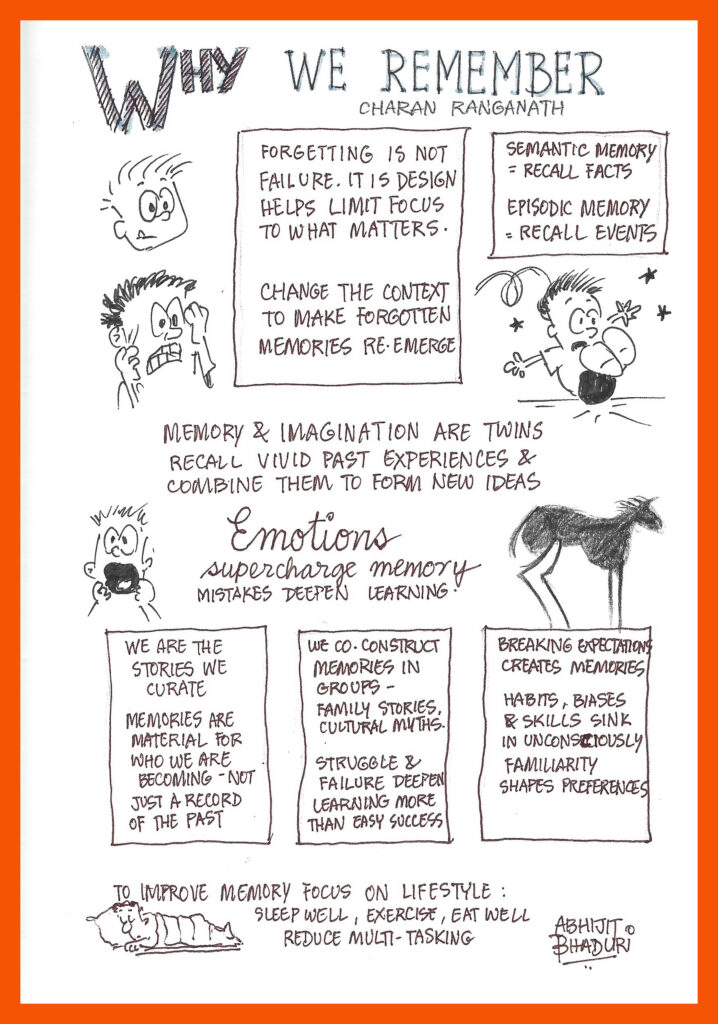
I wrote about the moment when I went back to XLRI to visit Niranjan. What was once Dadu’s dhaba when I was a student was now a very different space run by Dadu’s son – Niranjan.
When I was a student at XLRI Jamshedpur,
there was a tiny tea stall on campus – “Dadu’s Dhaba.”
It wasn’t fancy.
Just some benches.
But it was where we went when we needed a break – not just from lectures, but from the food at the hostel mess.
Dadu served us tea. We chatted often.
There was something gentle about him. He was wise.
When Dadu passed away,
he took with him a piece of history and his wisdom.
Then his son Niranjan took over where Dadu left off.
And when I went back to XLRI years later,
I saw something I didn’t expect…
Inside Niranjan’s tea shop (much bigger than Dadu’s tiny shop) – there was a framed page from my book Mediocre But Arrogant.
He had framed the part where I’d written about Dadu and him.
That moment stopped me.
It reminded me that words matter.
It was the legacy of his childhood
captured in print forever.
And that the simplest places often impact us deeply.
Dadu may no longer be there.
But his spirit – and his stories – live on in my heart
and in every cup of chai Niranjan now serves.
💭 Some places stay with you long after you’ve left.
